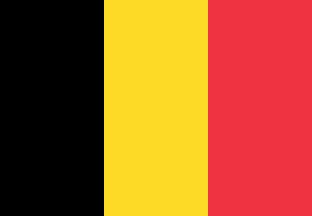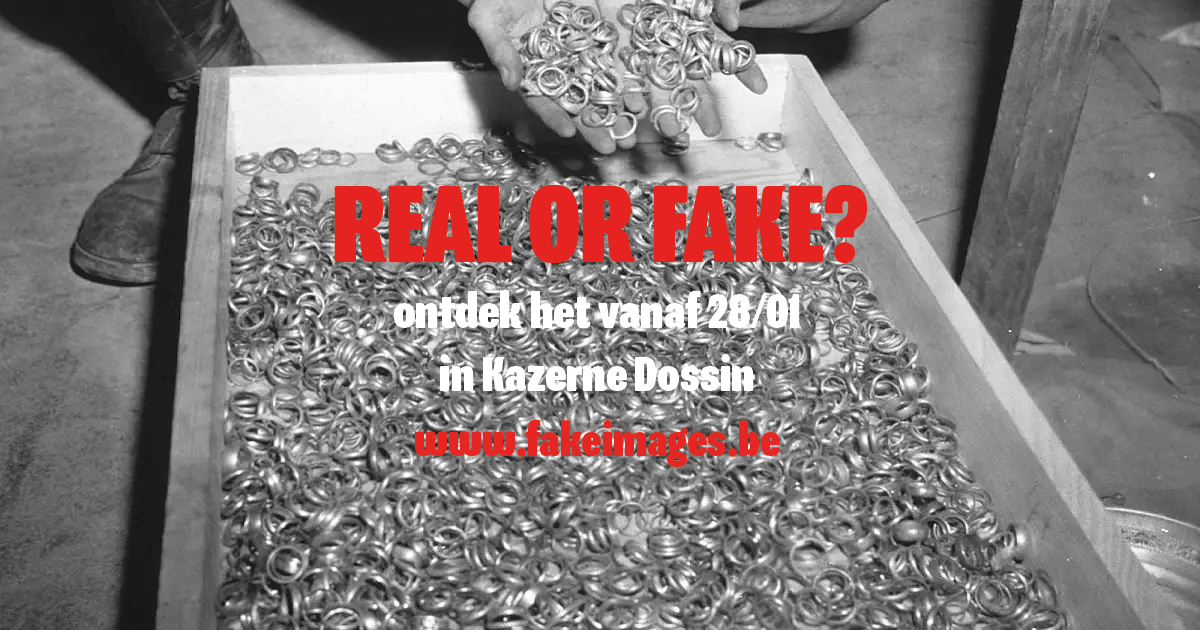
See all countries
- Argentina
- Australia
- Austria
- Belgium
- Bulgaria
- Canada
- Croatia
- Czech Republic
- Denmark
- Estonia
- Finland
- France
- Germany
- Greece
- Hungary
- Ireland
- Israel
- Italy
- Latvia
- Lithuania
- Luxembourg
- Netherlands
- North Macedonia
- Norway
- Poland
- Portugal
- Romania
- Serbia
- Slovakia
- Slovenia
- Spain
- Sweden
- Switzerland
- United Kingdom
- United States of America
Joined the IHRA
2005
International Holocaust Remembrance Day
27 January
Commemoration of the day of victory for democracy and remembrance of the Nazi-German genocide
8 May
Siska Castelain (Ministry of Foreign Affairs) – Head of Delegation
Frédéric Crahay (Auschwitz Foundation – Remembrance of Auschwitz) – Academic Working Group
Jean Cardoen (War Heritage Institute ) – Museums and Memorials Working Group
Joël Kotek (Fédération Wallonie-Bruxelles ) – Academic Working Group
Irena D’Aloisio (Fédération Wallonie-Bruxelles) – Education Working Group
Veerle Vanden Daelen (Kazerne Dossin) – Academic Working Group
Dirk Luyten (State Archives of Belgium) –Academic Working Group
Adriaan Baccaert (Kazerne Dossin) – Education Working Group
Ilse Bogaerts (War Heritage Institute) – Museums and Memorials Working Group
During Belgium’s IHRA Presidency in 2012, two high-visibility plenaries in Mechelen and Liège took place, attracting widespread media attention. The most lasting contribution of Belgium’s membership in the IHRA was the inauguration of the ‘Kazerne Dossin — Memorial, Museum and Documentation Centre on Holocaust and Human Rights’ in November 2012, on the spot where the Nazis and their collaborators organized the deportation of more than 25,000 men, women and children. The museum and documentation centre are rapidly gaining a reputation for excellence nationally and internationally.
An IHRA co-sponsored three-year cycle of international conferences, “Connecting Law and Memory” which concluded in 2018, focused on the collaboration of national police forces with the Nazi occupier and aimed to create a coordinating forum and network for sharing and benchmarking expertise, intended to strengthen civil servant resilience.
At the initiative of the War Heritage Institute and the Auschwitz Foundation, a train carrying 1000 young people from Belgium and Europe travels every three years from Brussels to Auschwitz. A year–long preparation and intensive follow-up makes this an experience with life-long impact.
Holocaust education, remembrance, and research in Belgium
All IHRA Member Countries are asked to complete a basic questionnaire with key facts about the state of Holocaust education, remembrance, and research in their country. The answers to the questionnaire, and to the Country Report, if available, are provided by the national delegations, who are also responsible for keeping the information up to date.
General information from the Belgian Flemish Region:
Bart Somers, The Flemish minister for Home Affairs, Public Governance, Civic Integration and Equal Opportunities gave a closing speech at the exhibition “Reflections. Roma in Belgium” in Kazerne Dossin on the 30th of September 2021. During his speech the Flemish minister explicitly made a link with the Roma deportation from Kazerne Dossin (link).
Declaration of commitment concerning the genocides and crimes against humanity during WWII: On January 27th 2015 the Minister of Education and representatives of the different educational networks signed a declaration of commitment concerning the genocides and crimes against humanity during WWII. With this declaration the educational networks commit themselves to explicitly integrate these topics in secondary education. The declaration contains four action domains: communication, curriculum secondary education, support, and co-operation and sharing of expertise. The main aim is to stimulate critical thinking about the origin of conflicts and how to deal with them today. In the explanatory memorandum of the declaration of commitment concerning the genocides and crimes against humanity during WWII the genocide of the Roma and Sinti is explicitly mentioned.
- Kazerne Dossin, Memorial, museum and research centre on Holocaust and Human
Rights, has a permanent display providing extensive information about the persecution of
Jews and Roma in Belgium and northern France during the Second World War, and
about human rights. In 2021, Kazerne Dossin’s huge “Wall of Portraits” contained 126
photographs of the 353 Roma deportees. Between 2019 and 2021, all texts relating to the
Roma have been adapted in the museum and in our publications for greater respect. In
2021, a temporary exhibition was housed in the museum. Kazerne Dossin pays a lot of
attention to anti-gypsyism in his workshops (Me Sem Rom), lectures and other activities.
The book of Kim Janssens was launched at Kazerne Dossin.
https://kazernedossin.eu/en/research-centre/
- Press release: From the fight against anti-gypsyism to the reception of Travellers.
According to Benoît Hons, socialist alderman in charge of tourism and education in the
municipality of Neupré, it is clear that the fight against stereotypes and discrimination
against the Traveller community will have to be continued with the same intensity in
2020:
- Council of Europe: Every day in Europe, “Roma people” experience discrimination and
exclusion. Anti-Gypsyism is a form of racial discrimination, illegal and contrary to human
rights. Education plays a central role in combating and overcoming anti-Gypsyism, as the
fruit of centuries of prejudice cannot be eradicated through the law and the courts alone.
Human rights education is necessary to combat anti-Gypsyism:
https://rm.coe.int/mirroirs-ebook-version/16805c2fd6
- UNIA is an independent public institution that fights against discrimination and
defends equal opportunities and human rights in Belgium. UNIA is internationally
recognised as a national human rights body (NHRI with B status). Every year, UNIA
draws up a detailed report on the discrimination it has been informed of:
https://www.unia.be/fr/chercher?cx=008853574438911911896%3Aht4u0etrbd0&ie=U
TF-8&q=roms&sa=
- « La haine, je dis non ! » est un programme d’éducation à la citoyenneté du Centre
Communautaire Laïc Juif David Susskind qui a développé de nombreux ateliers visant à
combattre les discriminations, à déconstruire les préjugés et les stéréotypes. Ses
éducateurs proposent aussi des ateliers/conférences sur l’histoire et la mémoire du
génocide des Gens du voyage et des Roms dans l’Europe occupée, les différents crimes
contre l’humanité et les crimes de génocides.
https://www.lahainejedisnon.be/secondaire-animations-a-la-carte
Belgium observes 27 January as the International Day of Commemoration in Memory
of the Victims of the Holocaust. There are around that time of the year many opportunities to participate to conferences, remembrance events organized by the Federal State or the Federated States, or other organizations. It is quite difficult though to give an exact number.
As for now a Memorial Day for commemorating the Roma and Sinti genocide remains to be established.
(Inter-)National initiatives
- Journée commémorative de l’Holocauste, SPF Chancellerie du Premier Ministre, 27
janvier 2013, https://news.belgium.be/fr/27-janvier-journee-internationale-de–
commemoration-de-la-memoire-des-victimes-de-lholocauste - Journée Internationale des Roms, La Ville de Bruxelles – Echevinat de l’Egalité des
Chances,
Arthis – La Maison Culturelle Belgo-Roumaine et le Conseil Bruxellois de la Diversité
Culturelle (CBDC), 8 avril 2022, https://www.arthis.org/evenements/divers/1673-
celebration-de-la-journee-internationale-des-roms.html - Journée européenne de commémoration du génocide des Roms durant la
Seconde Guerre mondiale, Parlement européen, 2 août depuis 2015,
https://www.europarl.europa.eu/news/fr/press-room/20150414IPR41851/le-pe-pour-
la-reconnaissance-de-la-journee-de-commemoration-du-genocide-des-roms.
Initiatives taken by Kazerne Dossin
- Since the establishment of the Jewish Museum of Deportation and Resistance and
Kazerne Dossin, Roma representatives have regularly been invited to annual
commemorations of the deportation from the Dossin Barracks, which happen always
around the 4th of September. - On January 15, 2020 (date of the departure in 1944 of the Roma Transport), the first
commemoration of the deportation of Jews and Roma from the north of France was
organized by one of the museum’s guides. Kazerne Dossin wants to organize and
perpetuate this event in order to bring the facts out of the shadows. - Since the opening of the museum in 2012, every year at the end of November, the
Kazerne Dossin organizes a large commemoration during which the portraits of the
deportees, Jews and Roma, found during the year, are added to the Wall. The names of
racial deportees who have been given a face are also read out by students. Descendants of Roma deportees as well as representatives of Roma populations in Belgium and Northern France are always invited. Unfortunately, they do not always attend the event. - To commemorate 75 years of transport from the Dossin barracks, Kazerne Dossin has
created a website where all the articles written have been published. The stories of Henri
Maitre and Rosa Keck, deported by the Z and XXV transports respectively, have been
developed (https://kazernedossin.memorial/transport/transport-z).
There are no specific university programs or professorship dedicated as such to the Holocaust in Belgium. The topic is included in more general courses on Jewish history,
literature and culture. Specific research centers on Jewish Studies exist at the University
of Antwerp, the Institute of Jewish Studies (www.uantwerpen.be/en/), and at the Université Libre de Bruxelles, the “Institut d’Etudes du Judaïsme (Institut Martin Buber)”(iej.site.ulb.be/institut-d-etudes-du-judaisme). Research on the Holocaust is also carried
out at Kazerne Dossin: Memorial, Museum and Documentation Centre on the Holocaust
and Human Rights (Mechelen) (kazernedossin.eu/en/), at the Centre for Historical Research and Documentation on War and Contemporary Society (www.cegesoma.be/en), and at the Foundation of Contemporary Memory (fmc-seh.be/en/home-2/). The latter also publishes a bi-lingual journal on the topic: “Bijdragen tot de eigentijdse Herinnering/Cahiers de la Mémoire Contemporaine”.
There seems to be nothing about the genocide of the Roma.
Démocratie ou Barbarie, the educational unit of the Wallonia-Brussels Federation and the
Centre de Médiation des Gens du Voyage (www.cmgv.be) provide teachers with numerous resources and educational files concerning the Roma.
http://www.democratieoubarbarie.cfwb.be/index.php?id=20340&L=0
A great deal of research has been conducted on the Roma in Europe. Much of this work is more sociological or anthropological than historical. Many studies cover a period before the Second World War. European studies pay little attention to the persecution and deportation of Roma arrested in France and Belgium and deported from the Dossin barracks. This is obviously a small population whose fate was special. Roma arrested in northern France were deported via Mechelen, while Roma from the rest of France were sedentary or placed in internment camps. The convoy of Roma detained at Westerbork is attached to transport XXV of 19 May 1944, on which only one Roma from Dossin is included. Thanks to a network set up by historians from Northern France, Norway, the Netherlands and Belgium, research on convoy Z from Mechelen has made great progress. The cross-border results shed light on aspects of these particular racial deportations that were previously ignored.
Here are the most important studies conducted since 2015:
Stichting O Lungo Drom, O Lungo Drom – De lange weg : een reizende tentoonstelling
in woord en beeld, [Rijswijk] : O Lungo Drom, [2016?]
About, Ilsen & Anna Abakunova, The Genocide and Persecution of Roma and Sinti.
Bibliography and Historiographical Review, International Holocaust Remembrance
Alliance, Berlin, 2016.
Laurence Schram (senior researcher at Kazerne Dossin), did her PhD thesis on the
history of the Dossin barraks as SS-Sammelager (May 2015). A book resulting from her
PhD was published under the Title: Dossin, l’antichambre d’Auschwitz; Bruxelles,
Racine, 2017.
Maria Rosvoll, Et Uønsket Folk : Utviklingen av en ‘Sigøynerpolitikk’ og utryddelsen av
norske rom 1915-1956, Oslo, Cappelen Damm, 2017.
Van De Steen, Yves, Samudaripen of Porajmos. De verzwegen massamoord op Romani’s
(1939-1945), Yves Van de Steen, Erembodegem, 2017.
Laurence Schram, Dossin, wachtkamer van Auschwitz, Tielt : Uitg. Lannoo N.V. 2018.
Monique Heddebaut (Professor in Lille) published : Des Tsiganes vers Auschwitz. Le
convoi Z du 15 janvier 1944, Paris, Éd. Tirésias-Michel Reynaud, 2018.
Kim Janssens, Een leven lang opgejaagd. De plek van woonwagenbewoners in
Vlaanderen, Tielt, Lannoo Campus, 2019.
Knothe, Holger & Robert Sigel (dir.), „… weil ich selber so überrascht war, dass ich so wenig wusste.“ Eine Studie über den Unterricht zum Schicksal der europäischen Roma und Sinti während des Holocaust, Herbert Utz Verlag, München, 2019.
Kazerne Dossin, Kazerne Dossin. Holocaust & Mensenrechten. Gand/Malines,
Tijdsbeeld/Kazerne Dossin, 2019.
Kazerne Dossin, Musée Kazerne Dossin. La Shoah et les Droits humains. Gand/Malines,
Marot-Tijdsbeeld/Kazerne Dossin, 2020.
Daeren, Lieve, De zoektocht naar een plaats. Rondtrekkende woonwagenbewoners en
het woonwagenbeleid in Vlaanderen, Gent: IN-Gent, 2020.
Maria Rosvoll, Zolo Karoli : en europeisk historie, Oslo, Cappelen Damm, 2021.
Karola Fings; Sybille Steinbacher, Sinti und Roma : der nationalsozialistische Völkermord
in historischer und gesellschaftspolitischer Perspektive Göttingen : Wallstein Verlag, [2021].
No.
Education: curriculum and teaching (Flanders)
In Flanders history and ‘remembrance education’ (of which the Holocaust and genocides are an integral part) are addressed through the compulsory core curriculum. This curriculum contains a number of objectives (called final objectives) for certain levels of education (end of primary and end of secondary education). In primary education they are formulated per learning area; in secondary education based on key competences. The objectives are determined by a decree of the Flemish Parliament. The general framework for history and remembrance education can mainly be found in developmental objectives for ‘Man and Society’ (Mens en Maatschappij) in primary education and in the key competences for historical awareness and citizenship education in secondary education.
In primary education a lot of attention goes to the Human Rights and the Rights of the Child, the causes and consequences of racism and discrimination, the role of the media, values and norms of different social and cultural groups,… In secondary education one of the basic aims is to learn pupils that there’s a (complex) link between past, present, and future, and that historical awareness is necessary to be able to situate oneself in today’s society and to contribute constructively to tomorrow’s. They also learn how to recognize and counter the mechanisms of prejudice, stereotyping, abuse of power and peer pressure.
The final objectives constitute the minimum expectations. Within the framework of these minimum objectives, the organizing authorities of the different educational networks have the right to establish the curriculum autonomously, with complete freedom regarding elaboration, deepening, enlargement and methodical incorporation. In Flemish education there is no central curriculum to be used by all schools. In practice this means that the genocide of the Roma can be taught (and is taught) within the framework of the existing final objectives, adapted to school context and population, but we have no global picture. It is safe to say that all Flemish schools devote a considerable amount of time to the Holocaust. It is, however, very likely that in this context more attention is devoted to the Shoah than to the genocide of the Roma and Sinti.
In 2008 the Special Committee for Remembrance Education (BCH – Bijzonder Comité voor Herinneringseducatie – www.herinneringseducatie.be) was created in Flanders. This committee, consists of educationalists of a number of major actors in the field of remembrance education among which; Kazerne Dossin (formerly the Jewish Museum of Deportation and Resistance), the Fortress of Breendonk, the Auschwitz Foundation, In Flanders Fields Museum, the pedagogical advisory services of the various educational networks and the Ministry of Education and Training. The committee has as its task to support the teaching teams who are involved in remembrance education and history, by working on the transparency and the quality of remembrance education. The genocide of the Roma and Sinti is included in some of the materials, seminars,… developed by the BCH (https://herinneringseducatie.be/over-ons).
The Flemish Ministry of Education is not involved in the development or distribution of didactic materials. Schools are free to choose the methods, materials,… they want to use. They can make use of manuals developed by educational publishers, they can develop materials themselves, and they can use the material or training developed by different organizations and nongovernmental organizations active in this field. This means that the genocide of the Roma can be addressed in some manuals, but there’s no overall picture.
Education: curriculum and teaching (Federation Wallonia-Brussels)
There are no specific textbooks on the genocide of the Roma.
Issues linked to the Nazi system of concentration and extermination camps in general and more specifically to the Holocaust are part of the syllabuses in the Federation Wallonia-Brussels., in particular on history courses. These issues are featured prominently in history textbooks used in different education networks, and are also considered in other courses, notably philosophy.
As for Flanders: No.
As for Federation Wallonia-Brussels, teaching about the Holocaust is compulsory in History courses. The responsibility for ensuring that this obligation is respected mainly falls on the school inspectorate of the Ministry of the Federation Wallonia-Brussels. The application of the Decree related to the Transmission of memory as well as the actions of the recognised centres and the results of the calls for projects are subject to regular assessments (internal and external).
A recent study concerning the influence of the teaching of the Holocaust on the development of attitudes and political behaviour of young people has been published by G. GRANDJEAN: Les jeunes et le génocide des Juifs. Analyse sociopolitique, Louvain-la-Neuve, De Boeck, 2014.
The education of the Holocaust in francophone Belgium takes into account and integrates the specific aspects of processes in our country. Pedagogic support and resources, as well as training offered to teachers, is mostly based on and focused on these aspects.
The genocide of the Roma is dealt with in the overall education framework looking at the
system of racial extermination operated by the Nazis. Currently there is no specific action
being taken to develop teaching on the genocide of the Roma.
Kazerne Dossin is the only museum, memorial and documentation centre in Belgium
which is working on the Judeocide and the annihilation of Roma people. Kazerne Dossin
is included in the IHRA.
https://www.holocaustremembrance.com/search/node?keys=kazerne+dossin
https://kazernedossin.eu/en/partner-item/ihra-international-holocaust-remembrance-
alliance
Kazerne Dossin is also actively involved in the EHRI project.
https://kazernedossin.eu/en/onderzoeksproject/ehri/
Federation Wallonia-Brussels adds the following:
The National Memorial of the Fortress of Breendonk is one of the best preserved concentration camps in Europe and tells the story of the prisoners of the Nazis, especially the political victims but also Jewish and Roma and Sinti. Every year, 35,000 to 40,000 schoolchildren visit the Memorial. Thanks to the wealth of information they will assimilate in the course of their visit, no child can leave without having formed a precise idea of its history, and of racial and political persecution in particular, thanks to a well structured cooperation with Kazerne Dossin in Mechelen. The Memorial also has an archive for further historical research. www.fortbreendonk.be
• CEGESOMA, Centre for Historical Research and Documentation on War and
Contemporary Society, is the Belgian centre of excellence for the history of 20th century conflicts. It carries out research, organises public events and holds document collections. As a federal institution it is, together with the State Archives and the Royal Library, part of the Documentation Pole. It is a platform for academic and public activities in Belgium and abroad, in particular with regard to the two World Wars. www.cegesoma.be/
• The non-profit organization Auschwitz Foundation – Auschwitz in Remembrance wants to
keep the memory of Nazi crimes and genocides alive and to raise collective awareness among young people of today and tomorrow. Concretely, the Auschwitz Foundation develops a number of activities in the field of pedagogics, didactics and in-service training, based on documentation, archives and research. www.auschwitz.be/
• Based on the principles of freedom of thought, tolerance towards other opinions and turning away from dogmatic laws, the “Centre Communautaire Laïc Juif David Susskind” honours the traditions of humanism and respects the Universal Declaration on Human Rights (1948). CCLJ offers activities and educational tools to participate in the struggle against racism, antisemitism, fascism. cclj.be/
• Based in Liège, “Territoires de la Mémoire” presents itself as a centre of education to
resistance and citizenship. Alongside a permanent exhibition called “Plus jamais ça” which attracts a school public, there are many other activities such as temporary exhibitions, film projections, animations… www.territoires-memoire.be
The Belgian national ICOM Committee is a two-folded structure based on the two language-based museum associations, that act as (vice-)chairperson in turns for a 3-year
term.
ICOM BELGIUM – International Council of Museums -International Council of Museums
https://www.icom-belgium-flanders.be/
Kazerne Dossin and CCLJ
The French speaking Community of Belgium, through Democracy or barbarism, a unit
dedicated to the transmission of remembrance of genocides, war crimes, crimes against
humanity, resistance movements and deeds, and in the frame of the Decree of 13 March
2009 about the Transmission of Remembrance finances different centers which are working in the field:
MNEMA cptm: www.mnema-cptm.be/
The Auschwitz Foundation: www.auschwitz.be/
The “Centre Communautaire Laïc Juif David Susskind »: cclj.be/
Les Territoires de la Mémoire: www.territoires-memoire.be/
IMAJ: www.imaj.be/
La Fondation de la Mémoire contemporaine: fmc-seh.be/en/home-2/
The Jewish Museum of Belgium: www.mjb-jmb.org/
These organizations deal with the question of the Holocaust, and much less or not at all with the genocide of the Roma.
Policy statement general
– Belgium has a national strategy for Roma integration, to be situated within the framework of the European Roma policy.
Integration policy
– Until September 2022, the ‘Neighbourhood Stewards’ project will focus on the social integration of Roma families in 4 cities: Antwerp, Ghent, Sint-Niklaas and Brussels (VGC).
The deployment of mediators or neighborhood stewards is a good method to gain the trust of the Roma, to take steps forward together with them on a socio-economic level and to improve the accessibility of the facilities.
– From 2022, an integrated approach will be used, as determined in the Horizontal Integration and Equal Opportunities Policy Plan 2020-2024, translated into the Living Together plan: https://lokaalbestuur.vlaanderen.be/plan-samenleven.
It is a goal-oriented action plan with the objective of full/proportionate participation in society, namely “Ensuring equal opportunities for social groups confronted with deprivation or exclusion”.
With regard to Roma, the plan provides an incentive for local authorities to subscribe to the
offer from 2022 with the ‘Bridge Figures’ action, thereby anchoring the specific approach and methodology for reaching Roma that was built with the ‘Neighbourhood Stewards’ projects.
Bridge figures literally and figuratively bridge the gap between the home context of socially vulnerable children and the school context or other domains such as well-being that they can use in the municipality or city. Bridge figures can be used for different target groups, with a specific approach and methodology developed for the reach of Roma.
The Flemish Agency for Integration and Inburgering has collected tips and good practices on a web page that provide an overview of support for Roma in Flanders.
Everything can be found at https://www.informatie-inburgering.be/nl/roma




